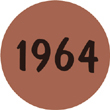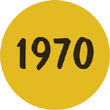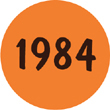

 hen you’re a little boy, and your life is all about “Eat your peas,” “Do your homework,” “Get in the car,” and so forth, you don’t feel very powerful. Let’s face it, when your life is controlled by “the evil grown-ups,” superpowers would sure come in handy. OK, so maybe I’m oversimplifying and/or overdramatizing, but there is no denying the fact that traditional play for boys has always been about finding power and strength through fantasy, whether it’s taking on the persona of a superhero, being at the helm of a powerful machine, or battling the evil forces to keep them from ruling the world.
hen you’re a little boy, and your life is all about “Eat your peas,” “Do your homework,” “Get in the car,” and so forth, you don’t feel very powerful. Let’s face it, when your life is controlled by “the evil grown-ups,” superpowers would sure come in handy. OK, so maybe I’m oversimplifying and/or overdramatizing, but there is no denying the fact that traditional play for boys has always been about finding power and strength through fantasy, whether it’s taking on the persona of a superhero, being at the helm of a powerful machine, or battling the evil forces to keep them from ruling the world.
Of course, there are and have always been girls who enjoy this kind of play, too; it’s not necessarily restricted to gender. However, whether it’s nature or nurture (and I’m not here to debate that point), in general, action-based play appeals more to boys, just as doll play tends to appeal to girls. In the late 1990s, my company constructed a play test where we put boys and girls in a room with traditional boys’ and girls’ toys. Within a few minutes, we observed the boys reaching for the Hot Wheels cars and Tonka trucks, while the girls waged an all-out Barbie battle. While this certainly wasn’t scientific research, it did show that these particular kids were drawn to the toys typically associated with their gender.
The fact is, most boys gravitate toward play that involves power and dominance. (And “most” is what drives the mass-market toy business.) In the years after World War II, as the nation was adjusting to peacetime, growing prosperity, and a booming infrastructure, classic building toys such as trucks and Erector sets were the most popular boys’ toys. The culture was definitely pushing boys into standardized male roles, and toys reflected that.
However, everything changed with the launch of G.I. Joe, the first so-called action figure—an acceptable euphemism for “doll for boys.” The post-WWII years were a patriotic time when few things were more macho than being a soldier, and by the mid-1960s G.I. Joe had become the ultimate role model—and the most popular toy—among legions of red-blooded American boys. Because play always reflects the larger culture, as the Cold War pressed on, military play gave way to spy-based play, and military reenactment with pretend armaments such as Johnny Seven O.M.A. took center stage. Then, in the later years of the Vietnam conflict, the military went out of style entirely and action figures—including Major Matt Mason and the Star Wars characters—took to space. When the space race ended and the relatively peaceful 1980s rolled around, young boys found villains to battle in the realm of future and fantasy with toys such as He-Man and the Masters of the Universe and the Transformers.
Yet whatever superpowers they had and whoever their enemies were, the one thing all these toys had in common was that they allowed boys to let their imaginations run wild and act out their heroic fantasies. Whether those fantasies involved space exploration, defending the universe against invaders, or ambushing their little sisters with an Air Blaster, the play was all about creating a world where they were in control—one where mom couldn’t force them to finish their math homework or eat their peas.

 s the United States emerged from World War II and construction boomed around the country, it was only natural that kids would clamor for toy versions of all the cranes and steam shovels and construction trucks they saw all around them.
s the United States emerged from World War II and construction boomed around the country, it was only natural that kids would clamor for toy versions of all the cranes and steam shovels and construction trucks they saw all around them.
Mound Metalcraft was founded in a schoolhouse basement in Mound, Minnesota, near Lake Minnetonka—the body of water that would ultimately inspire the company’s re-branded name. Originally founded to produce metal garden supplies, Mound Metalcraft started making a line of toy vehicles to keep the lights on during the gardening off season.
In 1947, the company produced about thirty-seven thousand individual trucks in two styles: a crane and a steam shovel. These were some tough toys, and they stood up to hard-playing kids. They became such hits that Mound Metalcraft ultimately abandoned gardening, changed its name to Tonka, and, quite literally, beat its plowshares into an ever-growing fleet of toy vehicles.
Boys and girls alike loved Tonka trucks for the realism of the play and the fact that they were virtually indestructible. Sure, the trucks could rust, but a little naval jelly and a paint job, and they were good as new all over again.
In 1965, Tonka introduced what would become its bestselling truck ever—the Tonka Mighty Dump Truck.
Even as the trucks acquired lights, sounds, electronics, and characters, no individual Tonka truck would ever outsell this one—especially once Tonka produced the now-classic commercial of an elephant unable to crush the indomitable truck.
Eventually Tonka started making the trucks out of plastic, or partially out of plastic, but they were still the strongest toys out there, and kids still loved them.
Tonka trucks are still an integral and memorable part of many childhoods (and for girls, too!). After years of being made out of plastic, in 2012, some of the classics have been reintroduced and made of steel as they were originally. It seems that it’s not just the trucks themselves, but the fun of creating a mini construction site in the sandbox that remains indestructible.

 or almost as long as there have been real cars, there have been toy cars. After all, few innovations have captured the imagination of kids and adults alike as much as the automobile. Some of the earliest toy cars, dating back to the 1920s, were large replicas made of sheet metal. Then, in the 1930s, German model makers began to produce smaller die-cast (molded metal) toy cars.
or almost as long as there have been real cars, there have been toy cars. After all, few innovations have captured the imagination of kids and adults alike as much as the automobile. Some of the earliest toy cars, dating back to the 1920s, were large replicas made of sheet metal. Then, in the 1930s, German model makers began to produce smaller die-cast (molded metal) toy cars.
But how the Matchbox cars came about is one of those happy accidents of the toy business. Leslie Smith and Rodney Smith (unrelated) had been lifelong friends, living in London. In the years after World War II, as London began to build itself back up from its near destruction, Leslie and Rodney saw a demand for all kinds of small die-cast metal. So they joined forces with a designer named Jack Odell and built a successful manufacturing business. As London recovered and demand for their products dropped, the partners realized they could offset their slow business period by making toys and toy parts.
It was Odell who, in 1952, discovered the market for miniaturized toy vehicles. His daughter had just started school and, like all kids, she wanted to take some toys along with her. The school, however, allowed children to only carry toys that fit in a matchbox. So Odell made a model of a small road roller, put it into a matchbox, and sent her off to school. Pretty soon, all the kids wanted one, too, and a new toy was born. (The name was a no-brainer.)
In the first year, four toys were produced under the Matchbox name, marketed as a “toy that is a complete toy” for under a dollar. Shortly thereafter, Matchbox Series 1–75 was born.
The cars’ popularity quickly spread throughout England to the United States, and all over the world. In 1956, the company expanded the line and introduced the Models of Yesteryear—a collection of classics that appealed to an ever-growing number of fans.
Matchbox cars are still being made, and while the antique replicas are no longer part of the line, those models live on through many active collectors and collector’s groups and conventions. Even as the brand has matured, what has never been lost is the endless fascination and imagination that children of all ages bring to a car that is small enough to fit inside a matchbox.

 ore than half a century later, it may be difficult to remember the craze that the 1957–65 Civil War Centennial caused. Civil War mania swept the nation, as the post office issued Civil War stamps, the National Parks Service restored Civil War battlefields, and history enthusiasts nationwide staged Civil War reenactments with a level of detail and accuracy that would have surely made their high school history teachers beam with pride.
ore than half a century later, it may be difficult to remember the craze that the 1957–65 Civil War Centennial caused. Civil War mania swept the nation, as the post office issued Civil War stamps, the National Parks Service restored Civil War battlefields, and history enthusiasts nationwide staged Civil War reenactments with a level of detail and accuracy that would have surely made their high school history teachers beam with pride.
The toy business, as usual, seized the opportunity, and that’s where Remco’s Johnny Reb Cannon, a plastic replica of a Civil War–era cannon, came into the picture. It sat on a caisson and flew the Confederate flag, and even came with four hollow cannonballs with a hole through the center of each. Kids simply threaded a ball onto a rod in the cannon and used the ramrod (included) to push the ball all the way down, cocking the firing mechanism. With a pull on the string, the ball would shoot as far as thirty-five feet.
The toy was hugely popular, even though there wasn’t a lot of power in it. What young boy wouldn’t want a toy that could shoot cannonballs at unsuspecting moms, sister, and playground rivals?
The toy sold for a couple of years but disappeared—along with most of the Civil War mania—after the centennial celebrations ended.
In 2006, Radar magazine named the Johnny Reb Cannon one of the Ten Most Dangerous Toys of All Time. True, the balls stung if they hit you, but any kid with the slightest bit of common sense knew to get out of the way—or get his revenge when it was his turn to fire.
Outside the odd posting on an auction site, the Johnny Reb Cannon is virtually impossible to find. Given current sensibilities, it’s unlikely that any toys celebrating the Civil War will ever make a comeback.

 he commercial claimed it could “blow out candles at 20-feet.” So, clearly kids everywhere had to try it. And it worked. The Wham-O Air Blaster looked like it was straight out of outer space—or at least the popular conceptions of what outer space might look like. To get the air blasting, you cocked the lever on the top, and a bladder inside was stretched back and locked in place. When you pulled the trigger, the bladder released, pushing the air in the large-ish chamber through a narrow opening at the front of the barrel, and shooting out air in one large—and loud—burst.
he commercial claimed it could “blow out candles at 20-feet.” So, clearly kids everywhere had to try it. And it worked. The Wham-O Air Blaster looked like it was straight out of outer space—or at least the popular conceptions of what outer space might look like. To get the air blasting, you cocked the lever on the top, and a bladder inside was stretched back and locked in place. When you pulled the trigger, the bladder released, pushing the air in the large-ish chamber through a narrow opening at the front of the barrel, and shooting out air in one large—and loud—burst.
Included with the Air Blaster was a hanging target—a picture of a gorilla that, when hit with the blast of air, would wave in the resulting breeze. The game was to see how far away you could make the target move.
Kids being kids, much of the fun was also in sneaking up behind people and shooting them with a blast of air, which inevitably resulted in arguments, confiscation, and being sent to one’s room, but was worth it.
The hugely popular toy spawned some urban legends, such as the kid who had his eardrums shot out by a blast of air. This never happened, of course, but it made for a good story, particularly when menacing smaller siblings with a cocked Air Blaster.
The Air Blaster stuck around for only a couple of years, which was pretty common for novelty toys at that time. As cool as it was, the toy had limited play. Once you’d blown out a candle and popped the target a few times, scared the cat or made your brothers jump, that was pretty much it. Plus, despite the fact that no injuries were reported, parents weren’t so keen on it, perhaps because the repeated loud pops were more annoying than dangerous.
Today the toy is rare, even on auction sites. Over the years, the inside chamber would decompose, so it’s even rarer to find one that works. Half a century later, it’s now just a blast from the past.

 he vast majority of boys and men alive today have never lived in a world without action figures. But the action figure is only about fifty years old. Sure, there were those crudely molded tiny little green army men, and in the 1920s and ’30s there were even little toy soldiers made of—gasp—lead, but fifty years ago, anything on the scale of our modern-day action figures, complete with personalities and highly developed backstories, would have been considered dolls for boys, and that would never do.
he vast majority of boys and men alive today have never lived in a world without action figures. But the action figure is only about fifty years old. Sure, there were those crudely molded tiny little green army men, and in the 1920s and ’30s there were even little toy soldiers made of—gasp—lead, but fifty years ago, anything on the scale of our modern-day action figures, complete with personalities and highly developed backstories, would have been considered dolls for boys, and that would never do.
That all changed in 1962, when Don Levine, creative director for Hasbro, was approached about creating children’s toys for an upcoming TV series called The Lieutenant. Levine passed on the opportunity because he thought the show wasn’t for kids, but the idea for a character based on the military wouldn’t quite get out of his head.
Yet, as Vincent Santelmo describes in The Complete Encyclopedia of G.I. Joe, it was actually an artist’s mannequin that finally inspired Levine to create a plaything based on young boys’ military heroes. Since the play would have to be all about action, the twelve-inch figure would have twenty-one movable parts to be able to act out any make-believe combat situation.
In Levine’s mind, this would make Joe much more than a doll, but the doll problem lingered, and initial response to the concept from the toy industry was lukewarm (as was the initial reaction to Barbie, by the way). Still, Hasbro had already invested two years and more than $2 million in the toy solider concept, so Levine—and Joe—got the green light.
Lucky for them, it turned out that kids wanted Joe—to the tune of $18 million in the first year alone. Eventually two out of three boys in the United States would have a G.I. Joe, and at one time the line represented 70 percent of Hasbro’s business.
In the mid-1960s, soldiers were everywhere, especially on television—from the serious series such as Combat! to the comedies of Hogan’s Heroes and Gomer Pyle USMC. In the years after the Korean War and while there was still support for the Vietnam conflict, there was no bigger hero than a solider and, thus, no more attractive a role model—and thus a toy—for young boys.
Yet the escalating conflict in Vietnam would have a profound impact on G.I. Joe. When Operation Rolling Thunder, the first sustained American assault on North Vietnam, began in 1965, the military was still seen as heroic. However, as the political landscape changed and support for the war dwindled, G.I. Joe had to respond, or be left behind.
So in the 1970s, he loosened his ties with the military and became, simply, a more generic hero. He was an adventurer on land, sea, and air rather than a military figure. Yet he was still a hero who also went to space and, for a time, had lifelike hair. And who can forget G.I. Joe with Kung Fu Grip? It’s still a punch line for adults. His story lines became more and more abstract as Joe found new nemeses off the battlefield. In the Reagan years, for example, Joe had new adventures on a popular TV show, going to space, tracking mummies, and battling enemies far removed from the real world of combat. It was a long way from his early days in the classic arenas of the army, air force, navy, and marines.
All tours of duty eventually end, but not this one. The G.I. Joe collector community is large and loyal, and he’s been featured in one major motion picture and in another in 2013. In this case the old soldier didn’t fade away at all; he became an entertainment franchise. In the minds of young boys who grew up in the 1960s and beyond, Joe will always be a Real American Hero, if not only for his heroic actions on the battlefield, then for creating a whole new way for boys to play with—yes—dolls.

 or boys who liked combat play, few toys are as fondly remembered as the Johnny Seven O.M.A. (One Man Army) from Topper Toys.
or boys who liked combat play, few toys are as fondly remembered as the Johnny Seven O.M.A. (One Man Army) from Topper Toys.
In the mid-1960s, the idea of the lone action hero, while not exactly new, was experiencing a revival. Still a few years before Vietnam War opposition would reach its peak, this was a time when soldiers were still seen as real-life heroes.
The Johnny Seven O.M.A. was everything a kid needed to be a hero in any combat situation. The ultimate weapon, the O.M.A. was more than three feet tall and weighed in at about four pounds (practically unheard of for an action toy of the time). It was the ultimate weapon that could be assembled and disassembled for whatever challenge the hero was facing.
This machine gun was an impressive weapon indeed. Its accoutrements—all fully operational, of course—included a grenade launcher, an antitank rocket, antibunker missiles, and a repeating rifle that could fire twelve plastic bullets in quick succession. Remove the stock, and you have a shorter tommy gun, and a pistol fit snugly under the rifle stock. It even came with a tripod stand for land battles. Oh, and, when you fired the rifle or the tommy gun, it made “realistic” shooting sounds. Kids who remember playing with it remember feeling invincible—and ready for any backyard military maneuvers.
In the years that followed, other combat-ready toys appeared on the scene, but as Vietnam War fervor morphed into Cold War paranoia, and kids began to pretend to be secret agents rather than military troops, the toy weapons business shifted more to spy-related gear, and the O.M.A. was left behind.
While it’s virtually impossible to conceive of parents buying their kids something like the O.M.A. today, the basic play pattern has lived on in such popular lines as the Power Rangers and the Transformers—not to mention in World of Warcraft and other multiplayer video combat games. In his wonderful and insightful book, Killing Monsters: Why Kids Need Fantasy, Super-Heroes and Make-Believe Violence, Gerard Jones argues that the kind of play that the Johnny Seven O.M.A. inspired builds self-confidence. By imagining themselves as heroes, kids prepare themselves to take on the more quotidian challenges of the grown-up world.

 wo years after Hasbro’s mega-success with G.I. Joe, Mattel was scrambling to get into the new market of boys’ action figures. Unfortunately, Hasbro had staked their claim on the four branches of military service with Joe, and the small company Rosko Industries had cornered the sports action figure market with their athletic Johnny Hero doll. (Johnny could be adapted for virtually any sport by changing his uniform and attaching accessories to a post in his hand.)
wo years after Hasbro’s mega-success with G.I. Joe, Mattel was scrambling to get into the new market of boys’ action figures. Unfortunately, Hasbro had staked their claim on the four branches of military service with Joe, and the small company Rosko Industries had cornered the sports action figure market with their athletic Johnny Hero doll. (Johnny could be adapted for virtually any sport by changing his uniform and attaching accessories to a post in his hand.)
So what 1960s-era male hero was left?
Space explorer!
With the United States in the midst of the race to the moon, there was nary a red-blooded young American male who didn’t fantasize about becoming an astronaut when he grew up. Plus, with opposition to the Vietnam War ratcheting up, G.I. Joe was no longer the role model he once was. Mattel quickly and cleverly jumped on the bandwagon—or, more accurately, the band rocket—and created Major Matt Mason, a realistic-looking astronaut hero who, as it happened, had already made it to the moon. Thus the launchpad for imaginative play was set.
Matt was the lead hero of the team, which eventually included Sergeant Storm in red, and Lieutenant Jeff Long, notably one of the first African American action heroes, in blue. Their bodies were composed of a rubberized material over a wire armature, and the wires tended to poke out with the kind of active play these dolls inspired. But that didn’t stop kids from loving them, in large part because they seemed so true to life. Cooler still, Mattel’s designs for accessories such as the space helmet, the jet backpack, and the Space Crawler vehicle (all sold separately, of course) were based on actual NASA concept drawings that had been used in NASA publicity and were familiar to both kids and adults. Other realistic play sets included a three-level Space Station and a variety of vehicles.
The major has made appearances in movies and TV shows, including Stargate and The Wedding Singer. In 1996, Matt made his off-Broadway debut in Kenneth Lonergan’s This Is Our Youth (with Josh Hamilton and Mark Ruffalo).
In the early 1970s, after real astronauts finally reached the moon and interest in the space program lagged, Mattel tried to revitalize Matt and his space adventures by introducing a variety of aliens and action/adventure story lines, but by then kids had moved on. Still, the toy has an almost cultlike following among space enthusiasts and science fiction fans.
Because the rubberized body tended to degrade over time and, as noted, the wires would pop through with tough play, mint condition figures are somewhat rare, though they are available through eBay and other collector’s sites. Compared to those of other action figures of the time, Matt’s fan base is small, but they are no less passionate about the intergalactic adventures they shared.
In 2012, Robert Zemeckis and Tom Hanks, whose fascination with space is well known, announced they were trying to get a movie based on Matt off the ground. Perhaps this will launch a classic hero into the hearts and minds of a new generation.

![]() n 1968, Americans’ romance with the automobile was at an all-time high. Muscle cars, sports cars—any kind of fast car, really—were all the rage and represented the freedom, power, and adventure of the ’60s zeitgeist.
n 1968, Americans’ romance with the automobile was at an all-time high. Muscle cars, sports cars—any kind of fast car, really—were all the rage and represented the freedom, power, and adventure of the ’60s zeitgeist.
In the mid-1960s Matchbox cars had been the epitome of toy car fun, but as real cars began to go faster, Matchbox began to seem tame—at least for kids who were looking for a little more action. Luckily, Elliot Handler, one of the founders of Mattel, saw that what boys wanted in their toy cars was speed … and more speed. Throw in a few daring stunts and a death-defying leap from the kitchen table to the countertop, and that was a peak play experience.
But to get that kind of speed in a toy car, Handler and his team had to innovate. Instead of attaching wheels directly to the body of the car, as was standard at the time, Mattel added an axle and “frictionless” plastic wheels. This simple design improvement created a toy car that could go faster than any before it.
The very first Hot Wheels car rolled off the production line in 1968. It was the Custom Camaro, and it was significant not just because it was the first in the Hot Wheels brand but because it was the first time that consumers would see a car in miniature before General Motors released a real version. This was true for all sixteen cars introduced in the line’s debut year.
Hot Wheels cars were a huge and immediate hit, earning the new brand notoriety for both the integrity of its replicas and the imagination in its concepts. Adulation grew when Mattel introduced its now iconic orange track system, which was a first—and took the play to a whole new level. For the growing number of fans, this was the best yet. Complete with launchers such as the power booster, which used foam wheels to shoot the cars along the track, Hot Wheels ran Matchbox off the road and quickly became the toy cars that kids had to have.
With nearly three billion cars sold, Hot Wheels remains one of the biggest toy brands in the United States. Mattel introduces more than two hundred new models every year, and has expanded the brand to include other high-performance vehicles and special series—including reintroductions of classic favorites. Hot Wheels collecting and history have inspired books, websites, and conventions.

 hey howled with power. At least that’s what the commercial said. They were also enhanced with “sonic sound,” which, despite its redundancy, communicated awesome speed to the legions of boys who embraced SSP Racers with a passion. Chalk up one more winning design to Marvin Glass, who dreamed up these pint-sized powerhouses.
hey howled with power. At least that’s what the commercial said. They were also enhanced with “sonic sound,” which, despite its redundancy, communicated awesome speed to the legions of boys who embraced SSP Racers with a passion. Chalk up one more winning design to Marvin Glass, who dreamed up these pint-sized powerhouses.
SSP Racers were all about going fast. The body of the car had an integrated rubber flywheel that was operated by a T-stick ripcord. The teeth on the T-stick engaged a cog on the side of the fly-wheel, and when it was pulled—or “ripped”—it sent the wheel spinning and the car streaking out at high speed. Better yet, the flywheel was strategically balanced in each car so that its plastic body could sail above the sidewalk—or wherever the high-speed race was happening.
The cars could do stunts, bash, crash, and still come back for more. While kids could play alone for hours on end with Matchbox cars and Hot Wheels, the SSP cars were all about competition. The challenge was to pull the T-stick harder than your opponent in head-to-head races. Part of the fun was building obstacles and ramps and challenging your opponents to all kinds of dangerous stunts. But these things were well built, and they stood up to all the stuff kids could dish out.
The car wasn’t without its dangers, however. Many a kid burned their fingers (though not severely) from touching the spinning flywheel. You could also get a burn if you held the car from the bottom and pulled the T-stick … if your palm was in the way. Ouch.
As the popularity of the SSP Racers grew, Kenner began to release different sets, including a memorable favorite: a demolition derby with breakaway pieces.
By the end of the 1970s, however, the craze had slowed down. Hot Wheels stunt sets were still hot, but skateboarding was rapidly becoming the neighborhood race game of choice.
It’s unlikely that the SSP would be brought back today, but its true innovation—the T-stick ripcord—has powered any number of toys since. Mattel’s 1984 He-Man Road Ripper, for example, was charged not, sad to say, by “the power of Grayskull” but by a plastic ripcord. And Hasbro’s current Beyblade line of battling tops uses the T-stick ripcord as well. So while the SSP Racers may have sped off into the sunset, their legacy drives on.

 entlemen, we can rebuild him. We have the technology. We have the capability to make the world’s first bionic man.”
entlemen, we can rebuild him. We have the technology. We have the capability to make the world’s first bionic man.”
If you were around from 1974 to 1978, you probably welcomed those familiar words into your home every week as your family nuked some TV dinners and gathered around the television to watch the latest installment of The Six Million Dollar Man. For more than one hundred episodes and through several TV movies, millions of viewers immersed themselves in the adventures of astronaut Steve Austin as he battled evil using his unstoppable bionic powers.
If ever there was a story line made for boys in the mid-1970s, this was it. In the wake of Skylab and the Voyager missions, astronauts had become akin to real-life superheroes. At the same time, the home computer was becoming a reality, and people were fascinated by the new technology. Add to that a character who cheated death to become the toughest guy around, and a contemporary hero with a classic twist was born.
The twelve-inch Steve Austin action figure had a bionic arm complete with a roll-up sleeve to show where his wiring had been replaced, and painted “circuit blocks” kids could take in and out. When you turned his head and pumped the switch on his back (powering a rudimentary hydraulic), the bionic man would lift up an enormous engine block (included). When his arms got tired from all that lifting, you could simply take them out and swap in an extra pair (not included).
Far and away the most popular feature, though, was the bionic eye. It didn’t do much, but kids could look through it and pretend to have bionic vision, and that was enough. It was all about the imagination.
The Steve Austin figure was the centerpiece of the line, and the most popular, but as the show—as well as demand from kids—exploded over the next three years, more toys and characters followed. There were at least three different versions of the Steve Austin figure, and Steve Austin’s boss, Oscar Goldman, got his own toy, as did Big Foot and Austin’s arch nemesis Maskatron. There were also play sets and spaceships, of course, so kids could re-create the whole intergalactic world of Steve Austin.
As so often happens, by the time the show was canceled in 1978, the kids who had made the toys such a hit had grown out of them. But a bigger threat was on the horizon as well—a little movie called Star Wars.
When Kenner introduced its three-and-three-fourths-inch Star Wars action figures in 1977 (less than half the size of the Bionic Man), and Hasbro soon followed suit with a relaunch of a smaller G.I. Joe, it was the end of an era for the Six Million Dollar Man and other large action toys.
Of course, collectors still love them, and mint condition figures can go for as much as $500 in the original packaging, though in most cases, the plastic sleeve covering the bionic features has dried out and disintegrated over time, making a fully functioning toy a definite rarity.
Still, while most collectibles eventually lose their superpowers, bionic memories refuse to die.

 his muscled he-man had blond hair and wore nothing but his wrestling briefs. For kids, the promise that his limbs could stretch to four times their original size afforded hours of delight and play. Could he do it? Can I do it? And, of course, can I stretch him even more? After all, there’s something satisfying about tests of strength and endurance, particularly when kids get to fantasize about having superior strength and power themselves. And indeed, many a kid measured his or her strength (Stretch had plenty of girl fans) by the ability to push Stretch’s limits.
his muscled he-man had blond hair and wore nothing but his wrestling briefs. For kids, the promise that his limbs could stretch to four times their original size afforded hours of delight and play. Could he do it? Can I do it? And, of course, can I stretch him even more? After all, there’s something satisfying about tests of strength and endurance, particularly when kids get to fantasize about having superior strength and power themselves. And indeed, many a kid measured his or her strength (Stretch had plenty of girl fans) by the ability to push Stretch’s limits.
Naturally, Stretch had to be quite durable to stand up to this type of play. He was made of latex and filled with—believe it or not—corn syrup. This made him vulnerable to punctures, but a bit of tape, an inner tube patch or a Band-Aid could usually make him right again. Those who played with Stretch will recall some of their more innovative attempts to stretch him—whether by using him for tug-of-war or running him over with a bike, car, or perhaps even a lawnmower. Stretch tended not to endure these attempts very well, but they did at least create enduring memories.
As toys go, Stretch had a pretty good run, hanging around until the early 1980s. In 1993, when professional wrestling was in its heyday, Cap Toys saw an opportunity to relaunch Stretch (though this time he was filled with tiny beads instead of corn syrup-based gel). However, though Stretch may have always snapped back to his original size, he never quite snapped back to his former glory.
Given the beatings he took, it’s no surprise Stretch toys didn’t age well. Plus, the latex and gel dried out over time, and owners of the original recall what happened if he was left in a hot car. (Not pretty.) So originals still in good condition are extremely rare and command a high price among collectors.
Hasbro, who has owned the property since its acquisition of Cap Toys, has had a feature film based on Stretch in the works since 2008, and at this writing Hollywood rumors suggest it may debut in 2014. If it does, it’s sure to (wait for it) stretch out his lifespan at least another few years.

 hat can anyone say about Star Wars that hasn’t been said? There has never been a movie franchise that has been so thoroughly discussed and dissected. Star Wars completely transformed popular culture and, with it, the toy business.
hat can anyone say about Star Wars that hasn’t been said? There has never been a movie franchise that has been so thoroughly discussed and dissected. Star Wars completely transformed popular culture and, with it, the toy business.
Before Star Wars, there was no such thing as the adult action figure collector. Today, there are legions of avid collectors who scour vintage toy stores, auction houses, and old garages all over the globe for the most obscure figures from the movies, TV shows, and comic books alike—and it all began with Star Wars.
Yet the potential for toy tie-ins was not immediately obvious to toy companies; after all, Star Wars was not a children’s movie. Mego, the leading company for action figures at the time, passed on the opportunity to make Star Wars toys, as did Mattel. Kenner began production of the Star Wars characters several months after the movie premiered because the agreement to create them had been signed just prior to the film’s opening. For the holiday season of 1977, Kenner sold empty boxes as a promise that the figures were on the way. It was controversial at the time, but it’s a legendary study in marketing, as they sold more than 600,000 of those empty packages. (Star Wars also changed the entire way toys based on movies were created. Once an afterthought, toy deals are now signed before the scripts are even finished.)
By today’s standards, those original figures were somewhat crude. To produce them in the then-new three-and-three-fourths-inch size, detail was sacrificed. The faces looked little like the actors, and though the figures’ arms and legs moved, movements were stiff and clumsy.
It turned out that none of this mattered, as Star Wars created a passion—in some cases an obsession—among kids and adults alike that’s never been matched.
As each new film was released, more characters joined the pantheon and new fans discovered the stories. Yet as popular as they were, Star Wars action figures never became a fad. They were something better: a reliable franchise that was regularly extended and carefully managed to keep the characters alive in the hearts and minds of its fans.
There is no age limit for Star Wars fans, and many original collectors have passed their treasures on to their children, many of whom have added to the collections. In fact, the third generation of Star Wars fans is just getting old enough to be introduced to the stories and characters, and the joy of coming across that rare Vinyl Caped Jawa on eBay.
But while Star Wars action figures continue to be big business, they are no longer the only toys in town. In 1999, LEGO launched its first Star Wars kit—the original X-Wing Starfighter—and in in 2008, Star Wars: The Clone Wars debuted in theaters and on television, creating new story lines that required a whole new line of toys.

![]() n the early 1980s, playgrounds and backyards rang with the cries of boys invoking “The Power of Grayskull.” No question about it, He-Man and Masters of the Universe (MOTU, to the cognoscenti) offered the ultimate fantasy for kids of any era—unstoppable superhero powers. Now the kid picked last for dodgeball could transform himself into an impressively muscled master of the universe—at least in the world of his imagination.
n the early 1980s, playgrounds and backyards rang with the cries of boys invoking “The Power of Grayskull.” No question about it, He-Man and Masters of the Universe (MOTU, to the cognoscenti) offered the ultimate fantasy for kids of any era—unstoppable superhero powers. Now the kid picked last for dodgeball could transform himself into an impressively muscled master of the universe—at least in the world of his imagination.
The basic story line was nothing new. Using his mythic powers, the gentle Prince Adam morphs into He-Man, battles the evil villains, and saves all of mankind. New or not, the toy line and the TV show, which premiered in 1983, were two of the biggest hits of the decade. But they might not have caught on had it not been for Star Wars. In the late 1960s, Mattel had made an epic blunder by failing to adapt its action toys to the space era, surrendering the boys’ action figure market to Kenner and Hasbro. The company was ready for a revival when they finally hit on this combination of comic book adventure and classic action toy.
After years of relatively static action figures (with the exception of G.I. Joe’s Kung-Fu Grip), Mattel came back swinging (literally) with the He-Man “Power Punch.” Twist this winsome warrior at the waist, and his bulging biceps would deliver a rubber-band-driven right hook to the evil Skeletor.
In 1985, in an attempt to attract a broader market (and stave off accusations of sexism among would-be heroines), Prince Adam (He-Man’s alter ego) discovered he had a twin sister named Adora, who became She-Ra, Princess of Power. Though Wonder Woman had paved the way in the late 1970s, She-Ra was the first female action hero to be played with equally by both boys and girls. But this was only the beginning of Mattel’s quest for world domination. During this first wave of MOTU popularity, more than 150 characters and play sets were produced, and kids clamored to collect them all.
The early 1980s were the heyday of the play set—large plastic castles or villages or worlds where stories came to life—and the MOTU line was no exception. (Play sets were always among the most profitable for toy companies, and the most heavily advertised on TV.) The prized jewel for He-Man fans was Castle Grayskull, which rivaled Barbie’s Dream House in size and features, including a working elevator, drawbridge, and trapdoor. It’s one of the most widely remembered toys by adults who had it (and many who didn’t, but coveted it).
The original MOTU toys had a very long run, from 1981 to 1987. Starting with comic books in 1981 and expanding to TV and movies in 1983, the various story lines kept kids engaged for six years before MOTU started to fade. But children of the ’80s hadn’t seen the last of He-Man.
In 2008, Mattel turned to the design group Four Horsemen to redesign the figures for a new generation—or at least for collectors, who still love the line. While the new generation MOTU have become popular collectibles, the originals, too, are still coveted. In a particularly modern twist on old-school nostalgia, there are even iPhone apps to connect collectors and track down the now highly prized original figures.

![]() n the early 1980s, transforming robots weren’t a new concept. They had been popular in Japan, but the story lines weren’t very well developed, and they never really translated to the American market.
n the early 1980s, transforming robots weren’t a new concept. They had been popular in Japan, but the story lines weren’t very well developed, and they never really translated to the American market.
That is, until Hasbro brought together the different lines under the Transformers banner and developed the story of Optimus Prime, the good guy leader of the Autobots, and Megatron, the nefarious villain who commanded the evil Decepticons.
Yes, transforming the robots from a vehicle to a robot and back again was fun, but what sealed the deal with the kids was the story line, established through a TV series and a popular comic book so that by the time the toys rolled into stores in 1984, they had already captured boys’ imaginations.
The first series featured battles between eighteen Autobots and ten Decepticons, and they touched off real-life battles of their own as holiday shoppers waged war in toy store aisles to secure the quickly sold-out toys. As this came only a year after the Cabbage Patch slugfests, the yearly competition to score “the hot new toy” had entered the culture for good.
As we’ve seen again and again, success breeds imitation, and the market was suddenly flooded with a variety of knock-offs. In fact, so many fake transformers hit the market that in 1985 Hasbro put a special badge on its official merchandise. When activated by the heat of a finger, the badge would show an Autobot or Decepticon logo—proof that the kid had an authentic Transformer. It was the epitome of cool at the time.
The TV series, which drove the story and toy sales, lasted through 1987, and the 1986 animated movie was a huge hit. The death of Optimus Prime at the end of the movie—a risky gambit, to be sure—prompted an unprecedented letter-writing campaign to Hasbro, but fortunately, robots can’t die in the traditional sense, and Optimus was reanimated to fight another day.
Throughout the 1980s, many new models of varying complexity were introduced, including the innovative spring-loaded self-transforming toys and Transformers for younger children (marketed under Hasbro’s Playskool brand). Of course, the story line got only more and more robust.
Transfomers remain a powerhouse toy line for Hasbro. With three hit movies—and a fourth on the way in 2014—not to mention a popular animated TV show, these characters and stories remain vibrant and compelling for kids of all ages—and, along with Star Wars, they remain a multigenerational phenomenon.

![]() f little is cool, then tiny must be cooler … or so one might assume, considering the popularity of MicroMachines in the mid-1980s. These ultratiny cars were about half the size of a typical Hot Wheels or Matchbox car (they had a scale ratio of approximately 1:152), but for kids of the ’80s, they provided an equally large dose of fun.
f little is cool, then tiny must be cooler … or so one might assume, considering the popularity of MicroMachines in the mid-1980s. These ultratiny cars were about half the size of a typical Hot Wheels or Matchbox car (they had a scale ratio of approximately 1:152), but for kids of the ’80s, they provided an equally large dose of fun.
MicroMachines were created by Clem Heeden, who licensed the idea to Galoob. Over the next several years, Galoob hit the figurative gas and rolled out millions of the teeny vehicles, from cars and trucks to airplanes, speedboats, motorcycles, monster trucks, and military vehicles, to name just a few. There were also countless tracks and play sets that could be configured and combined to create an entire superhighway system for these tiny cars.
There were also MicroMachines cars modeled on hot entertainment franchises, including the Mighty Morphin Power Rangers, Star Trek, James Bond, and Indiana Jones. But probably the most popular—and most remembered to this day—was the line based on Star Wars.
They were such a hit that they made MicroMachines the most popular toy car on the market for several years, cutting off both Hot Wheels and Matchbox on the inside turn.
But the thing that really kicked MicroMachines into high gear was the now classic TV commercial featuring John Moschitta, Jr., at the time the world’s fastest talker (clocking in at 586 words per minute, according to Guinness World Records). The fun of trying to decipher his speed-talking gibberish kept kids listening, entertained, and clamoring for more MicroMachines.
After Hasbro acquired the brand in 1998, the cars largely went off the market. There are MicroMachines conspiracy theories on the Internet that imply that Hasbro was trying to kill any competition to their Star Wars toys, but that should be taken with the same grain of salt that most online conspiracy theories deserve. More likely, it was the rise of video games that put these cars up on blocks.
In recent years, more companies have been producing microminiature cars, and while some of them are excellent toys, no one brand has captured the imagination the way MicroMachines did.

 ow here’s an unlikely group of heroes: teenage turtles who talk like surfers, fight like ninjas, play rock and roll, and subsist primarily on pizza. Doesn’t sound very mainstream, does it?
ow here’s an unlikely group of heroes: teenage turtles who talk like surfers, fight like ninjas, play rock and roll, and subsist primarily on pizza. Doesn’t sound very mainstream, does it?
Well, it wasn’t. The Teenage Mutant Ninja Turtles came from under ground, literally. But I don’t just mean the sewer where they lived. The ninja turtles got their start in a series of underground comic books created by Kevin Eastman and Peter Laird in 1984.
Interestingly, the four classically named characters—Michelangelo, Leonardo, Donatello, and Raphael (the creators studied art history in college)—were originally designed to satirize the whole action figure / superhero genre. Tired of their uninspiring jobs, they invested about $1,200 to produce three thousand black-and-white copies of their first comic book. It quickly became a hit in the underground comic world. Pretty soon they were selling more than 1,500 copies of each issue—the most successful black-and-white comic of all time.
As often happens in the toy business, anytime new characters start to attract an audience (even if that audience is comic book nerds living in their parents’ basement), people start to pay attention. One of those people was Mark Freedman, who owned a relatively small company at the time and was desperate for a piece of the boys’ action figure business. He snapped up the property and brought the turtles from the black-and-white world of underground comics to the very colorful world of mass-market toys. And since this was the 1980s, a time when no toy succeeded without a TV show, a pilot was produced before you could say “Cowabunga.”
Now, had Eastman and Laird studied child development instead of art history, they might have predicted what would happen next. Young kids, the audience for both afternoon cartoons and action figures, don’t really get satire. Instead, they simply thought that any amphibians who could karate chop the heck out of street thugs, evil overlords, and alien invaders—and knew how to surf—were very cool. They also loved the jokey camaraderie of the turtles, who were the kind of irreverent and funny teens young boys aspired to be—that is, if they lived in sewers and had been trained in martial arts by a mutated rat named Splinter. Plus, kids universally love talking animals (just ask Disney).
But we also loved them for how they spoke. Suddenly people who had never seen a “killer wave” were shouting “Cowabunga!” on a daily or even hourly basis (much to the chagrin of many a teacher and parent). In fact, though it may be hard for children of the ’80s to recall a time when the word “dude” wasn’t part of the common vocabulary, its prevalence in our culture today is largely attributable to the Turtles.
They had a farther-reaching impact, as well. Interest in martial arts exploded, and pizza sales soared through the roof.
Inevitably, the fad passed and the Power Rangers and other newer action heroes replaced the Turtles. However, in 2012, Nickelodeon decided to bring them back out of their shells with a new, slightly more modern version of the original show (and, of course, the requisite line of merchandise, comics, and games), and once again the Turtles are riding the A-frame. “Cowabunga!”